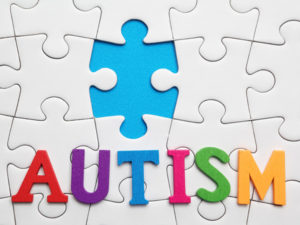A child’s dual diagnoses—autism and a vision and/or hearing disorder—are best addressed at the same time. A child’s age when autism and a vision and/or hearing disorder is diagnosed, and which disorder is diagnosed , can be critical. However, families have reported a time lag of 18 months to 12 years between diagnoses, especially when a sensory loss is identified. Though unfortunate, this happens for many reasons.
Hearing and vision screening have been mandated in schools; newborn hearing is temporarily mandated. But some- times a lack of cooperation or varying responses on the child’s part during testing, and evaluators conducting tests who are not knowledgeable about autism or behavioral techniques, can lead to delays in more specific testing for hearing and visual problems. In addition, different boards of education across the country have set testing guidelines from annually to every three years without considering that some children come from families
with a genetic history of hearing or sight disorders that include additional slow or progressive loss of input.
Early detection hearing screening
Early detection Vision Screening
sight and/or hearing disorder.
A child born with a sight and hearing dysfunction, both congenital disorders that can be progressive over time, requires increasing compensatory supports or accommodations. Additionally, sight/hearing dysfunction can be the result of a trauma related to an injury of which parents or care givers are unaware, or even can be secondary to taking some medications. If a child is recognized as having hearing or visual loss before having an autism diagnosis, some of their autism-related behaviors may be mistaken by parents and professionals as a consequence of
that loss.
More often, a child is born into a family without an immediate member with a sight/hearing disability, so parents and care givers are buried in learning about communication, safety and adapting daily living skills for their child. Autism may emerge later than the physical handicap, and occurs to differing degrees of severity, making it dificult to distinguish the signs—despite vision or hearing disorders and autism being very different challenges.

